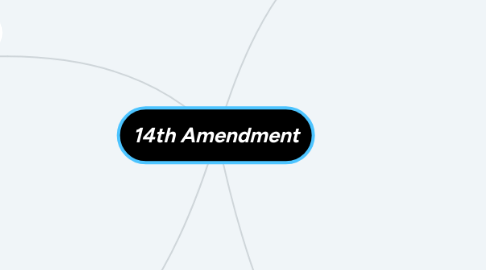
1. Key Terms
1.1. Equal Pay
1.1.1. Women argued about having "equal pay for equal work"
1.1.2. “No employer . . . shall discriminate . . . between employees on the basis of sex by paying wages to employees in such establishment at a rate less than the rate at which he pays employees of the opposite sex in such establishment for equal work. ." quote from the Equal Pay Act
1.1.3. Gender-based discrimination was brought up when women wouldn't receive the equal amount of pay as men did for the same work
1.2. Equal Protection
1.2.1. Prevents discrimination amongst people or groups
1.2.2. No state shall take the power of legal decision from any person
1.2.3. Courts, voting rights, and rights of alien are protected
2. Definition
2.1. Protected African Americans by citizenship
2.2. If they were born as a US citizen they has the same rights as white citizens
2.3. Military was sent to protect enslaved peoples rights
3. Origins
3.1. Black Codes
3.1.1. It was illegal to to be unemployed
3.1.2. Free African Americans had limited rights
3.1.3. They didn't have the ability to testify
3.2. Dred Scott
3.2.1. Dred Scott sued for his freedom after his owners death
3.2.2. Since he was a slave, he was not considered a citizen of the US
3.3. Please v. Ferguson
3.3.1. Homer Plessy sued government stating his 14th Amendment was violated
3.3.2. Supreme Court stated that it was not violated
3.3.3. 14th Amendment was not violated as long as the people were "equal"
3.4. Brown v. Board of Education
3.4.1. Supreme Court stated segregated public schools was unconstitutional
3.4.2. It took two years to enforce at state level
3.4.3. Thurgood Marshall argued the case
4. Passed Acts
4.1. Americans with Disabilities Act (1990)
4.1.1. People with mental and physical disabilities had an expanded equal protection
4.2. Indian Education Act (1972)
4.2.1. Improved education for native Americans
4.2.2. Provided money and services
4.3. Civil Rights Act (1957)
4.3.1. Protected voting rights
4.3.2. Put an end on discrimination and legal segregation
4.3.3. Prosecution of the government will be used on anyone who tried to limit the rights
4.4. Individuals with Disabilities Education Act (1997)
4.4.1. Students with disabilities had more education opportunities
4.5. Voting Rights Act of 1965
4.5.1. Oulawed denial of voting rights
4.5.2. It was used to help enforce 15th Amendment
4.5.2.1. 15th Amendment: protected African Americans rights to vote

